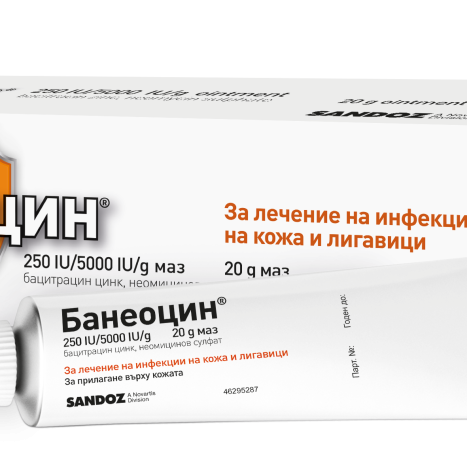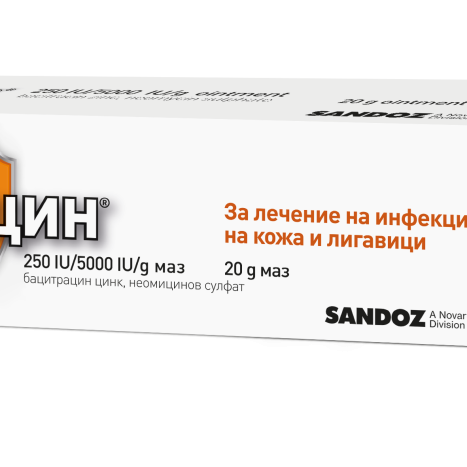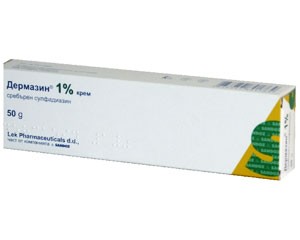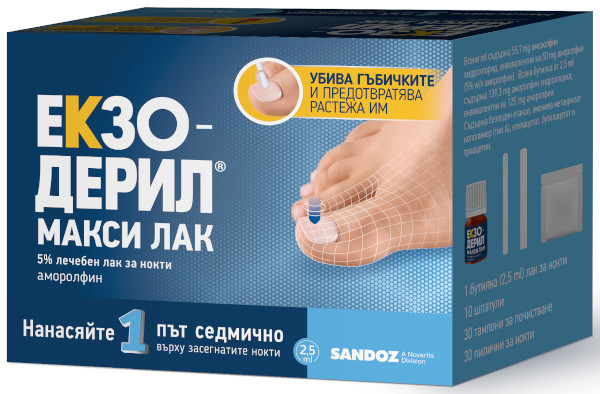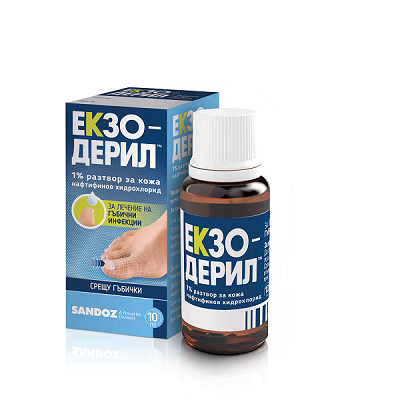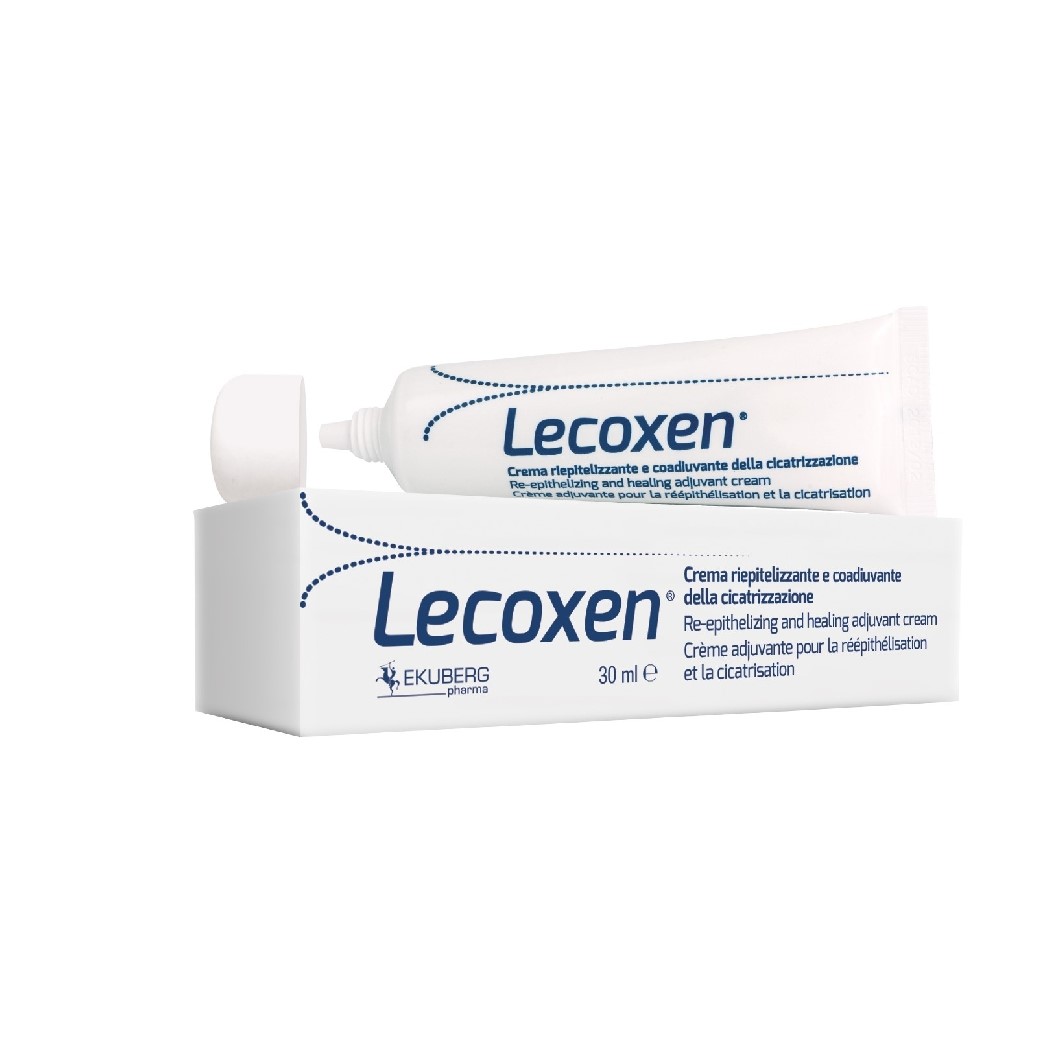BANEOCIN ung 20g
Leaflet: information for the user
Baneocin 250 IU / 5,000 IU / g ointment
Baneocin 250 IU / 5,000 IU / g ointment
Bacitracin zinc/neomycin sulfate
( B acitracin zinc/neomycin sulphate )
Read all of this leaflet carefully before you start using this medicine because it contains important information for you.
Always take this medicine exactly as described in this leaflet or as your doctor or pharmacist has told you.
- Keep this leaflet. You may need to read it again.
- If they need further information or advice, ask their doctor or pharmacist.
- If you experience any side effects, tell your doctor or pharmacist. This includes all possible
- If you do not feel better within 7 days or your condition worsens, you should seek medical attention.
What this leaflet contains :
- What is Baneocin and what is it used for?
- What you need to know before using Baneocin
- How to use Baneocin
- Possible side effects
- How to store Baneocin
- Package contents and additional information
1. What Baneocin is and what it is used for
Baneocin ointment is an antibiotic medicinal product for topical use. It contains two antibiotic active substances, bacitracin and neomycin, which are active against a large number of bacteria that cause infections.
Baneocin ointment is used
- for the treatment of skin infections that affect the surface layers of the skin
- for the treatment and prevention of infections of superficial wounds, burns or cuts that occur during or after treatment of another, pre-existing infection
- to prevent infection after skin surgery
2. What you need to know before using Baneocin
Do not use Baneocin
- if you are hypersensitive to bacitracin and/or neomycin, as well as to other aminoglycoside antibiotics or to any of the other ingredients of this medicine (listed in section 6).
- on extensive and severe skin wounds, as the passage of the drug into the blood may cause adverse reactions on the part of the auditory system, which may lead to hearing loss.
- if you suffer from severe urinary dysfunction due to heart or kidney disease or have vestibular impairment and/or inner ear disorder, as there is a possibility of uncontrolled resorption upon administration.
- in the external ear canal if the eardrum is damaged/perforated.
- Do not apply to eyes.
Warnings and precautions
Talk to your doctor or pharmacist before using Baneocin.
Talk to your doctor at the first signs of side effects.
It is necessary to inform your doctor if pregnancy occurs during treatment with Baneocin.
If you have used more Baneocin ointment than recommended doses, monitor carefully for signs of kidney impairment (loss of appetite, excessive thirst, decreased urine output, traces of blood in the urine) or hearing impairment (high-frequency hearing loss, "ringing in the ears", noise and pressure in the ears), especially when treating abscesses that heal with difficulty, due to the possible penetration of dissolved active substances into the bloodstream. This risk is higher in patients with impaired liver and/or kidney function, therefore, close monitoring by testing urine and blood and/or hearing is recommended before and during intensive treatment of such patients.
Combined topical and systemic administration of aminoglycosides should be avoided due to the risk of cumulative toxicity.
With high doses and prolonged treatment with Baneocin, there is a risk of muscle weakness or its worsening if it is already present (e.g. myasthenia gravis or a similar disease).
With prolonged use of antibiotics, the possibility of the development of resistant microorganisms must be taken into account.
If allergies or superinfections occur, the use of this medicine should be discontinued.
When exposed to the sun or UV radiation, there is a possibility of photosensitivity reactions or phototoxicity.
Please pay attention to signs of infection (burning, redness, swelling and pain) or symptoms of fungal infection at the treated area. Consult a doctor if you notice these or other unusual changes.
Other medicines and Baneocin
Tell your doctor or pharmacist if you are taking, have recently taken or might take any other medicines.
If the active substances of Baneocin are absorbed when applied to a large body area, with impaired skin integrity, this may increase kidney damage caused by other drugs (such as cephalosporins or other aminoglycoside antibiotics).
Simultaneous use of Baneocin ointment with diuretics such as ethacrynic acid or furosemide may increase the symptoms of kidney and hearing damage caused by them.
Baneocin ointment can increase muscle weakness if used together with anesthetics during surgery.
Pregnancy and breastfeeding
If you are pregnant or breast-feeding, think you may be pregnant or are planning to become pregnant, ask your doctor or pharmacist for advice before using this medicine.
When applied to large, open wounds or similar injuries, the active substances may act not only at the site of inflammation; they may also pass into the mother's body. In such cases, Baneocin ointment should only be used as directed by a doctor.
3. How to use Baneocin
Always use this medicine exactly as described in this leaflet or as your doctor or pharmacist has told you. If you are not sure, ask your doctor or pharmacist.
This medicine is for external use only.
Adults and children
Baneocin ointment is applied in a thin layer to the treatment area, 2 to 3 times a day.
Do not exceed the dose of 200 g of Baneocin ointment in 7 days.
When re-treating, the maximum dose should be halved.
If you use more Baneocin than you should
If doses exceed those strongly recommended, attention should be paid to symptoms of nephrotoxicity and/or ototoxicity due to possible resorption of the active substances (see Warnings and precautions ).
Please inform your doctor or pharmacist if Baneocin has been used in large quantities.
If you forget to apply Baneocin
Do not use a double dose to make up for a missed dose.
If you stop using Baneocin ointment
Even when the symptoms of your condition improve or disappear, continue to apply Baneocin ointment for the entire necessary period of treatment, if one has been recommended to you by a doctor, to ensure that all disease-causing agents are destroyed and to avoid re-infection.
If you have any further questions on the use of this medicine, ask your doctor or pharmacist.
4. Possible side effects
Like all medicines, this medicine can cause side effects, although not everybody gets them.
Rare (may affect up to 1 in 1,000 people)
- Allergic reactions (signs may include: redness, dryness and peeling of the skin, skin rash, itching, no improvement in the condition or its worsening).
If you experience such symptoms, stop using this medicine and consult your doctor or pharmacist immediately.
During use on large areas of injured skin, the passage of active substances into the body may cause adverse drug reactions.
The following side effects have been reported for Baneocin ointment:
Rare (may affect up to 1 in 1,000 people)
- If you are allergic to neomycin, in 50% of cases there will also be a cross-allergy to other aminoglycoside antibiotics.
Not known (frequency cannot be estimated from the available data)
- Compared to intact skin, sensitivity to many different substances, including neomycin, is increased, especially when used in chronic dermatoses (e.g., congestive dermatitis or chronic otitis media). Under certain conditions, allergy may even manifest itself simply as a lack of response to the condition.
- Vestibular nerve disorder, neuromuscular blockade
- Hearing impairment
- With prolonged use, allergic reactions may occur, such as redness, dry, flaky skin, skin rash and itching.
- Spread of lesions or failure to respond to treatment
- Photosensitivity or phototoxicity reactions, upon exposure to the sun or ultraviolet light
- Kidney disorder.
Reporting side effects
If you get any side effects, talk to your doctor, pharmacist or nurse. This includes any possible side effects not listed in this leaflet. You can also report side effects directly via the national reporting system to the Bulgarian Medicines Agency, 8 Damyan Gruev Str., 1303 Sofia, tel.: +35928903417, website: www.bda.bg. By reporting side effects, you can help to provide more information on the safety of this medicine.
5. How to store Baneocin
Store below 25 ºС.
Store in the original packaging.
Keep out of the reach of children.
Do not use this medicine after the expiry date which is stated on the carton after “EXP”. The expiry date refers to the last day of that month.
Do not throw away any medicines via wastewater or household waste. Ask your pharmacist how to dispose of medicines you no longer use. This will help to protect the environment.
6. Contents of the pack and other information
What does Baneocin contain?
- The active substances are bacitracin and neomycin. 1 g of ointment contains 250 IU bacitracin zinc and 5,000 IU neomycin sulfate.
- The other substances are lanolin and white soft paraffin.
What Baneocin looks like and what the pack contains
Ointment. Tube of 5 g, 15 g or 20 g.
Not all types of packaging can be released for sale.
Marketing Authorisation Holder :
Sandoz GmbH,
6250 Kundl,
Austria
Manufacturers:
Sandoz GmbH,
6250 Kundl,
Austria
and
Lek dd, Verovškova 57,
1526 Ljubljana,
Slovenia
Salutas Pharma GmBH,
Lange Goehren 3,
D-39171 Osterweddingen
Germany
Date of last revision of the leaflet:
MM/YYYY


